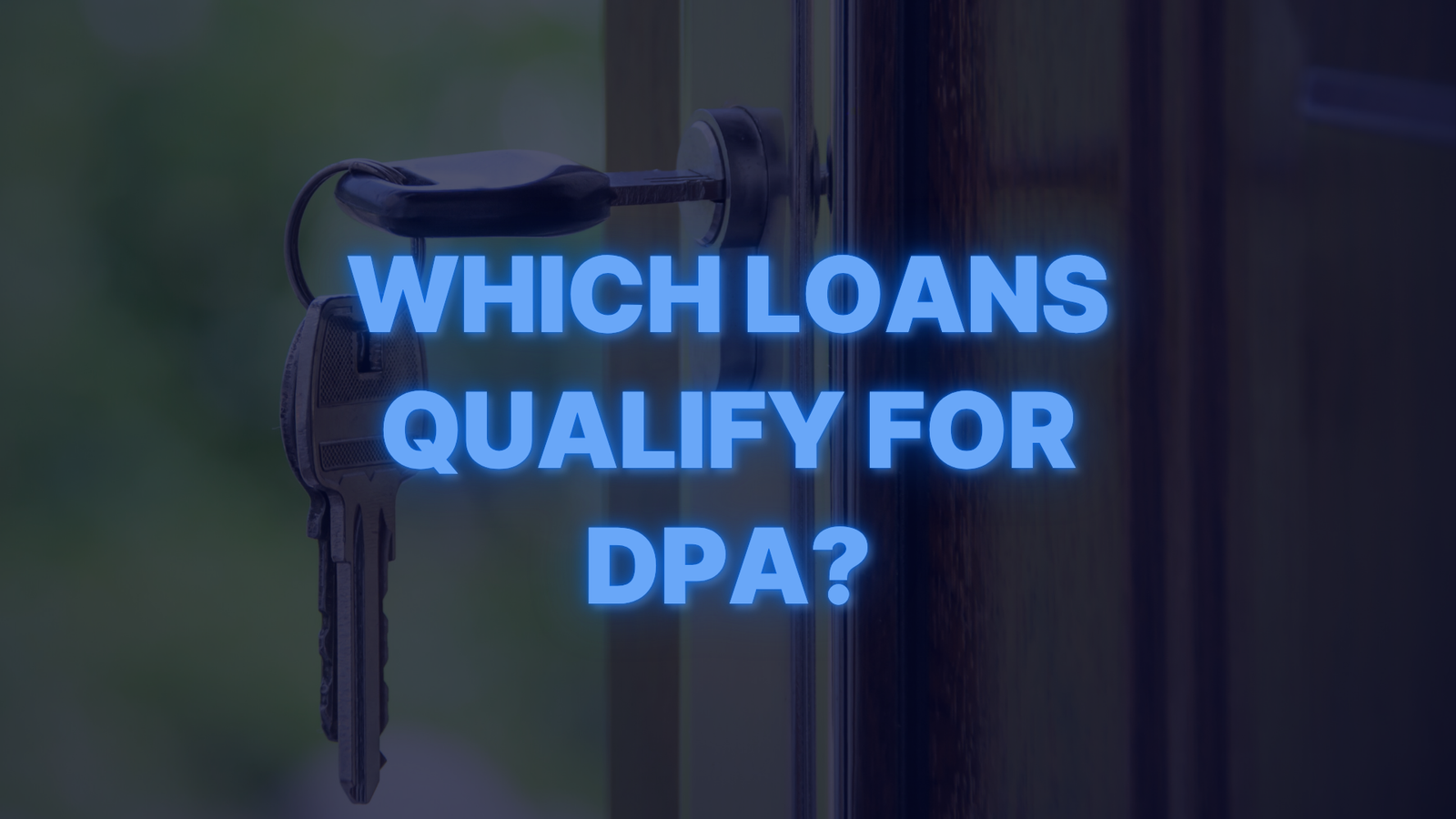Make your first home purchase in California easier with specialized loan programs and down payment assistance designed for first-time buyers. Based in Glendale and serving Burbank and surrounding areas, Corbett Uzel helps you navigate options and secure financing that fits your goals, so you can confidently step into California homeownership.

First-Time Homebuyer and Down Payment Assistance (DPA) Loans help make homeownership more accessible by offering financial aid for down payments and closing costs. These programs are designed for new buyers who need extra support in affording a home and often come in the form of grants, second mortgages, or forgivable loans.

These programs are ideal for first-time buyers, individuals who haven’t owned a home in the past three years, and those with limited savings. Many DPA programs also cater to teachers, healthcare workers, and public service employees. If you’re struggling to afford a down payment but have steady income and credit, a DPA loan may be a great option.

DPA programs provide financial assistance through grants or low-interest second mortgages that cover down payments and closing costs. Some programs require repayment, while others are forgivable after a set number of years. Eligibility typically depends on income, credit score, and property location.

DPA funds can often be used with popular mortgage loan programs. FHA loans allow down payments as low as 3.5 percent, making them a great option for first-time buyers. VA loans provide zero down payment options for eligible veterans and active-duty military members. USDA loans offer 100 percent financing for homes in designated rural areas. Conventional loans, such as Fannie Mae’s HomeReady and Freddie Mac’s Home Possible programs, allow as little as 3 percent down.

These programs reduce upfront costs, making homeownership more accessible. Some offer forgivable assistance, meaning you won’t have to repay the funds if you meet residency requirements. Others provide flexible credit requirements and lower interest rates than traditional loans. By lowering the financial barriers to homeownership, DPA loans help buyers purchase a home sooner.

If saving for a down payment is the biggest obstacle to buying a home, a DPA loan can provide the financial help you need. These programs are designed to assist qualified buyers with securing a home loan while keeping upfront costs low. If you’re unsure whether you qualify, speaking with a mortgage expert can help determine the best solution for your situation.
We specialize in helping first-time buyers navigate the home loan process and secure the best down payment assistance programs available. Our team works with a variety of lenders and housing agencies to match buyers with financing options that fit their needs.
From pre-qualification to closing, we guide you every step of the way. Our goal is to make homeownership possible by providing expert advice, personalized loan solutions, and seamless application support.
With access to a wide range of down payment assistance programs, competitive mortgage rates, and flexible financing options, we make buying your first home easier than ever. Contact us today to get started!
Buying your first home is exciting, but it often comes with questions. These FAQs explain how First-Time Homebuyer Loans and Down Payment Assistance (DPA) programs work, who qualifies, and how they can help you purchase a home in Burbank, Glendale, and across California. Learn how to qualify, reduce your upfront costs, and make confident decisions with guidance from an experienced mortgage professional.
A First-Time Homebuyer Loan is designed to make homeownership more accessible for people purchasing their first home. These loans often come with lower down payment options, flexible credit requirements, and closing cost assistance. Many programs also allow buyers to combine a primary loan with Down Payment Assistance (DPA) to reduce upfront costs.
Down Payment Assistance programs help cover part or all of the down payment and sometimes closing costs. These programs are typically available to first-time buyers, moderate-income borrowers, and certain professions such as teachers, nurses, and first responders. Qualification often depends on income, credit, and the price of the home.
Yes, many programs are designed to support a variety of financial situations. Even if you are self-employed or have limited credit history, you may still qualify. Providing consistent income documentation and a reasonable credit profile can help you access DPA options that fit your needs.
Not always. Some programs define a “first-time buyer” as anyone who has not owned a home in the past three years. This means even if you have owned property before, you might still qualify for First-Time Homebuyer benefits after that period.
These programs help reduce the biggest barriers to homeownership. Benefits can include lower down payments, reduced interest rates, and grants or forgivable loans that do not have to be repaid if you stay in the home for a certain number of years. Many programs also offer homeownership education to prepare you for long-term success.
No, you do not need perfect credit. Most First-Time Homebuyer and DPA programs are built to help buyers with moderate or even less-than-perfect credit. Improving your credit score can help you qualify for better terms, but many lenders work with a range of credit profiles.
Yes, DPA programs can often be paired with FHA, VA, or Conventional loans. This combination helps reduce upfront costs while maintaining flexibility in loan structure and repayment terms. Your lender can help determine which pairing best fits your goals and qualifications.
The amount varies by program and location. Many provide between 3% and 5% of the home’s purchase price toward your down payment or closing costs. Some local or state-funded programs in California offer higher amounts, especially in high-cost areas like Los Angeles County.
Some programs offer grants that do not need to be repaid, while others provide low-interest or forgivable loans that are repaid only if you sell or refinance within a set period. Your lender can explain the terms for each option so you understand whether repayment applies.
Start by speaking with a local mortgage professional who is experienced in First-Time Homebuyer programs. They will help you confirm eligibility, gather the necessary documents, and match you with the best available loan or assistance program for your area.
A First-Time Homebuyer / DPA Loan is a mortgage assistance program designed to help buyers afford a home by covering down payment and closing costs. These programs are often offered by state and local governments, housing agencies, and nonprofit organizations to support first-time buyers in becoming homeowners.
DPA programs provide financial assistance in different forms. Grants do not need to be repaid, making them an attractive option for buyers who qualify. Forgivable loans are structured so that repayment is waived if the buyer stays in the home for a specified period. Low-interest second mortgages provide additional financing to cover upfront costs, with repayment terms that are usually more flexible than traditional loans.
Many first-time buyers qualify for DPA programs, even if they have owned a home before. If you haven’t owned a home in the past three years, you may still be eligible for first-time buyer assistance. Certain programs also cater to specific groups, including public service workers, healthcare professionals, and military personnel.
Most DPA programs have income limits based on household size and location. These limits ensure that assistance reaches buyers who need it most. However, income guidelines vary by program, and some allow higher-income households to qualify if they meet other criteria.
Down payment assistance can also help with closing costs, which can add up quickly. Many programs offer aid that covers both expenses, reducing the amount of cash needed upfront to secure a mortgage.
The amount of down payment assistance you can receive depends on the program and your location. Some programs offer fixed amounts, such as $5,000 or $10,000, while others cover a percentage of the home’s purchase price. In some cases, assistance may be large enough to eliminate the need for a down payment entirely.
DPA funds may be structured as a grant, forgivable loan, or low-interest second mortgage. Grants do not require repayment, while forgivable loans are waived after the buyer meets residency requirements. Some programs provide deferred-payment loans that don’t require repayment until the home is sold or refinanced.
First-time buyers can combine DPA funds with FHA, VA, USDA, or conventional loans to maximize affordability. Many programs are designed to work alongside these loan options, reducing upfront costs and making homeownership more accessible.
Applying for a DPA loan involves working with an approved lender or housing agency that offers assistance programs. Buyers must meet eligibility requirements, complete a homebuyer education course, and provide necessary documentation to verify income, employment, and creditworthiness.
Credit score requirements vary by program. Many DPA programs accept credit scores as low as 580, while others require a minimum score of 620. In some cases, buyers with lower credit scores may still qualify if they demonstrate financial stability and the ability to repay the loan.
Certain DPA loans include forgivable terms, meaning the funds provided do not need to be repaid if the buyer meets specific conditions. If the home is sold before the required residency period ends, the buyer may be responsible for repaying part or all of the assistance received.
Yes! Many DPA programs allow funds to be used for both down payments and closing costs. Some programs provide grants or forgivable loans that help cover additional expenses, reducing out-of-pocket costs for first-time buyers.